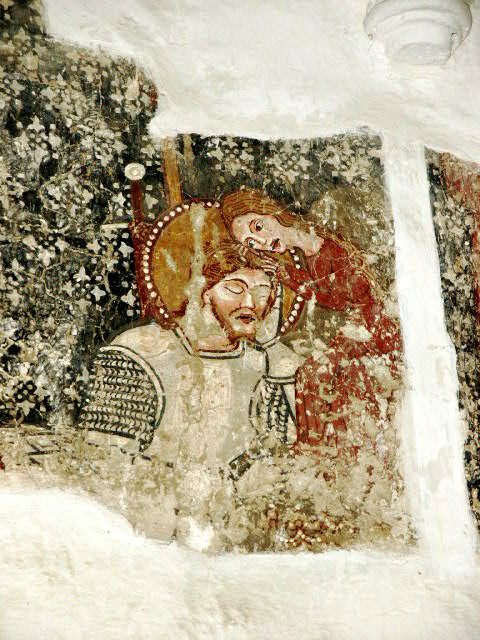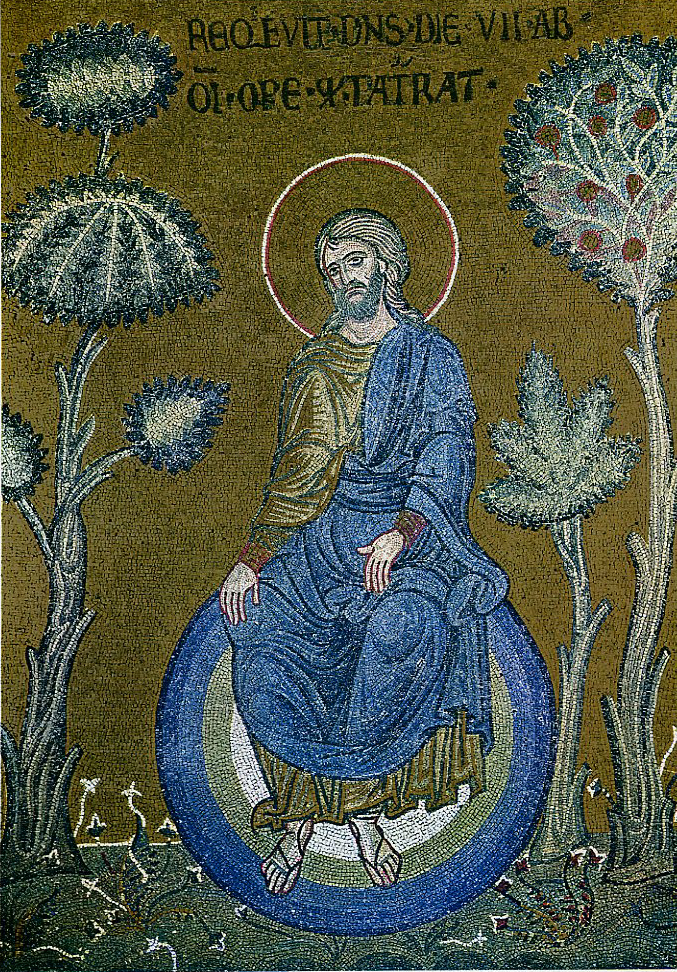|
Socianianism
Socinianism ( ) is a Nontrinitarian Christian belief system developed and co-founded during the Protestant Reformation by the Italian Renaissance humanists and theologians Lelio Sozzini and Fausto Sozzini, uncle and nephew, respectively. It was developed among the Polish Brethren in the Polish Reformed Church between the 16th and 17th centuries, and embraced by the Unitarian Church of Transylvania during the same period. Socinianism is most famous for its unitarian belief but contains a number of other distinctive theological doctrines, such as the denial of divine foreknowledge regarding the actions of free agents and rejection of the pre-existence of Christ. Origins The beliefs of Socinianism date from the wing of the Protestant Reformation known as the Radical Reformation and have their root in the Italian Anabaptist movement of the 1540s, such as the anti-trinitarian Council of Venice in 1550. Lelio Sozzini was the first of the Italian anti-trinitarians to go beyond Ari ... [...More Info...] [...Related Items...] OR: [Wikipedia] [Google] [Baidu] |
Unitarian Church Of Transylvania
The Unitarian Church of Transylvania (; ), also known as the Hungarian Unitarian Church (; ), is a Nontrinitarian Christian denomination of the Unitarian tradition, based in the city of Cluj, Transylvania, Romania. Founded in 1568 in the Eastern Hungarian Kingdom by the Unitarian preacher and theologian Ferenc Dávid (c. 1520–1579), it is the oldest continuing Unitarian denomination in the world. It has a majority- Hungarian following, and is one of the 18 religious denominations given official recognition by the Government of Romania. The Transylvanian and Hungarian Unitarians represent the only branch of Unitarianism not to have adopted a congregationalist polity, and remains quasi- episcopal; the Irish Non-subscribing Presbyterian Church, a distinct body closely related to Unitarianism, has a presbyterian structure.Paul F. Bradshaw, ''The New SCM Dictionary of Liturgy and Worship'', SCM-Canterbury Press Ltd, London, 2002, p.460. The Unitarian Church of Transylvania is ... [...More Info...] [...Related Items...] OR: [Wikipedia] [Google] [Baidu] |
Ferenc Dávid
Ferenc Dávid (also rendered as ''Francis David'' or ''Francis Davidis''; born as Franz David Hertel, – 15 November 1579) was a preacher and theologian from Transylvania, the founder of the Unitarian Church of Transylvania, and the leading figure of the Nontrinitarian Christian movements during the Protestant Reformation. He disputed the mainstream Christian doctrine of the Trinity, believing God to be one and indivisible. Studying Catholic theology in Wittenberg and in Frankfurt an der Oder, he was first ordained as a Roman Catholic priest, later he became a Lutheran minister and then a Calvinist bishop in the Principality of Transylvania. Throughout his career as a Christian theologian and professor, Dávid learnt the teachings and practices of the Roman Catholic and Magisterial Protestant churches, but later rejected several of them and came to embrace Unitarianism. Life Early life Ferenc Dávid was born in Kolozsvár, Hungary (present-day Cluj-Napoca, Romania), t ... [...More Info...] [...Related Items...] OR: [Wikipedia] [Google] [Baidu] |
Giorgio Biandrata
Giorgio Biandrata or Blandrata (15155 May 1588) was an Italian-born Transylvanian physician and polemicist, who came from the De Biandrate family, powerful from the early part of the 13th century. He was an antitrinitarian. Biandrata was born in Saluzzo, the youngest son of Bernardino Biandrata. He graduated in arts and medicine at Montpellier in 1533, and specialized in the functional and nervous disorders of women. In 1544 he made his first trip to Transylvania; in 1553 he was with Giovanni Paolo Alciati in the Grisons; in 1557 he spent a year at Geneva, in constant contact with Calvin, who distrusted him. He attended Jane Stafford, English wife of Count Celso Massimiliano Martinengo, preacher of the Italian church at Geneva, and fostered anti-trinitarian opinions in that church. In 1558 he found it expedient to move to Poland, where he became a leader of the heretical party at the synods of Pińczów (1558) and Książ Wielkopolski (1560 and 1562). His point was the sup ... [...More Info...] [...Related Items...] OR: [Wikipedia] [Google] [Baidu] |
Unitarian Church In Transylvania
The Unitarian Church of Transylvania (; ), also known as the Hungarian Unitarian Church (; ), is a Nontrinitarian Christian denomination of the Unitarian tradition, based in the city of Cluj, Transylvania, Romania. Founded in 1568 in the Eastern Hungarian Kingdom by the Unitarian preacher and theologian Ferenc Dávid (c. 1520–1579), it is the oldest continuing Unitarian denomination in the world. It has a majority- Hungarian following, and is one of the 18 religious denominations given official recognition by the Government of Romania. The Transylvanian and Hungarian Unitarians represent the only branch of Unitarianism not to have adopted a congregationalist polity, and remains quasi- episcopal; the Irish Non-subscribing Presbyterian Church, a distinct body closely related to Unitarianism, has a presbyterian structure.Paul F. Bradshaw, ''The New SCM Dictionary of Liturgy and Worship'', SCM-Canterbury Press Ltd, London, 2002, p.460. The Unitarian Church of Transylvania is a ... [...More Info...] [...Related Items...] OR: [Wikipedia] [Google] [Baidu] |
New Creation (theology)
The new creation (Greek: καινὴ κτίσις) is a concept found in the Old Testament and New Testament, related to the new life (ἐν καινότητι ζωῆς) and new man (referring to the spiritual rebirth through Christ Jesus) (καινός ἄνθρωπος) but with reference also to the Genesis creation narrative. In the Old Testament The theology of new creation arises from the Old Testament. In light of the coming destruction as covenant curses, the prophets also speak of a subsequent restoration afterwards. Among the ways that this restoration is described is through new creation. For example, Isaiah 65:17 (NIV) reads, “See, I will create new heavens and a new earth. The former things will not be remembered, nor will they come to mind." The remainder of the Isaiah 65-66 explore the nature of new creation. In the letters of Paul The language of a new creation is not limited to the two verses in the Authorized King James Version that include that actual phras ... [...More Info...] [...Related Items...] OR: [Wikipedia] [Google] [Baidu] |
Logos (Christianity)
In Christianity, the Logos () is a name or title of Jesus in Christianity, Jesus Christ, seen as the Pre-existence of Christ, pre-existent God the Son, second person of the Trinity. In the Douay–Rheims, King James Version, King James, New International Version, New International, and other versions of the Bible, the first verse of the Gospel of John reads: In these translations, ''Word'' is used for , although the term is often used transliterated but untranslated in theological discourse. According to Irenaeus, Irenaeus of Lyon (–202), a student of Polycarp (–156), John the Apostle wrote these words specifically to refute the teachings of Cerinthus, who both resided and taught at Ephesus, the city John settled in following his return from John of Patmos, exile on Patmos. While Cerinthus claimed that the world was made by "a certain Power far separated from ... Almighty God", John, according to Irenaeus, by means of John 1:1-5, presented Almighty God as the Creator ... [...More Info...] [...Related Items...] OR: [Wikipedia] [Google] [Baidu] |
Arianism
Arianism (, ) is a Christology, Christological doctrine which rejects the traditional notion of the Trinity and considers Jesus to be a creation of God, and therefore distinct from God. It is named after its major proponent, Arius (). It is considered Heresy in Christianity, heretical by most modern mainstream branches of Christianity. It is held by a minority of modern denominations, although some of these denominations hold related doctrines such as Socinianism, and some shy away from use of the term Arian due to the term's historically negative connotations. Modern denominations sometimes connected to the teaching include Jehovah's Witnesses, some individual churches within the Churches of Christ (including the movement's founder Barton W. Stone), as well as some Hebrew Roots Christians and Messianic Judaism, Messianic Jews (although many Messianic Jews also follow Nicene Christianity). It is first attributed to Arius (), a Christian presbyter who preached and studied in Ale ... [...More Info...] [...Related Items...] OR: [Wikipedia] [Google] [Baidu] |
Council Of Venice
The Council of Veneto or Synod at Venice 1550 was a meeting in Venice of the anabaptist radicals of Northern Italy. History The Council had been preceded by the antitrinitarian '' Collegia Vicentina'' (Lat. ''Vicenza colloquia'') in Vicenza Vicenza ( , ; or , archaically ) is a city in northeastern Italy. It is in the Veneto region, at the northern base of the Monte Berico, where it straddles the Bacchiglione, River Bacchiglione. Vicenza is approximately west of Venice and e ... in which Lelio Sozzini took a leading role in 1546. In late 1549 or early 1550 Anabaptists began to assemble again in Vicenza. In September 1550 sixty Anabaptist leaders, including 20 or 30 exiles from Switzerland, assembled in Venice. Under the impetus of two followers of Servetus, " Camillo Renato" (Paolo Ricci) and a "Tiziano" (possibly Lorenzo Tizzano) the synod agreed on a set of anti-Trinitarian principles.Roberto De Mattei ''A sinistra di Lutero: sette e movimenti religiosi nell'Euro ... [...More Info...] [...Related Items...] OR: [Wikipedia] [Google] [Baidu] |
Anabaptism
Anabaptism (from Neo-Latin , from the Greek language, Greek : 're-' and 'baptism'; , earlier also )Since the middle of the 20th century, the German-speaking world no longer uses the term (translation: "Re-baptizers"), considering it biased. The term (translation: "Baptizers") is now used, which is considered more impartial. From the perspective of their persecutors, the "Baptizers" baptized for the second time those "who as infants had already been baptized". The denigrative term Anabaptist, given to them by others, signifies rebaptizing and is considered a polemical term, so it has been dropped from use in modern German. However, in the English-speaking world, it is still used to distinguish the Baptizers more clearly from the Baptists, a Protestant sect that developed later in England. Compare their self-designation as "Brethren in Christ" or "Church of God": . is a List of Christian movements, Christian movement which traces its origins to the Radical Reformation in the 1 ... [...More Info...] [...Related Items...] OR: [Wikipedia] [Google] [Baidu] |
Radical Reformation
The Radical Reformation represented a response to perceived corruption both in the Catholic Church and in the expanding Magisterial Protestant movement led by Martin Luther and many others. Starting in Germany and Switzerland in the 16th century, the Radical Reformation gave birth to many radical Protestant groups throughout Europe. The term covers Radical Reformers like Thomas Müntzer and Andreas Karlstadt, the Zwickau prophets, and Anabaptist groups like the Hutterites and the Mennonites. In Germany, Switzerland and Austria, a majority sympathized with the Radical Reformation despite intense persecution. Although the surviving proportion of the European population that rebelled against Catholic, Lutheran and Reformed Churches was small, Radical Reformers wrote profusely, and the literature on the Radical Reformation is disproportionately large, partly as a result of the proliferation of the Radical Reformation teachings in the United States. History Some early forms ... [...More Info...] [...Related Items...] OR: [Wikipedia] [Google] [Baidu] |
Pre-existence Of Christ
The pre-existence of Christ asserts the existence of Christ prior to his incarnation as Jesus. One of the relevant Bible passages is John 1 () where, in the Trinitarian interpretation, Christ is identified with a pre-existent divine hypostasis (substantive reality) called the ''Logos'' (Koine Greek for "word"). There are nontrinitarian views that question the aspect of personal pre-existence, the aspect of divinity, or both. More particularly, John 1:15, 18 says: This doctrine is supported in when Jesus refers to the glory that he had with the Father "before the world existed" during the Farewell Discourse.''Creation and Christology: A Study on the Johannine Prologue in the Light of Early Jewish Creation Accounts'' by Masanobu Endo 2002 page 233 also refers to the Father loving Jesus "before the foundation of the world". , , and are passages that are seen as evidence that Paul believed in the pre-existence of Christ. Although the interpretation that these passages ref ... [...More Info...] [...Related Items...] OR: [Wikipedia] [Google] [Baidu] |




